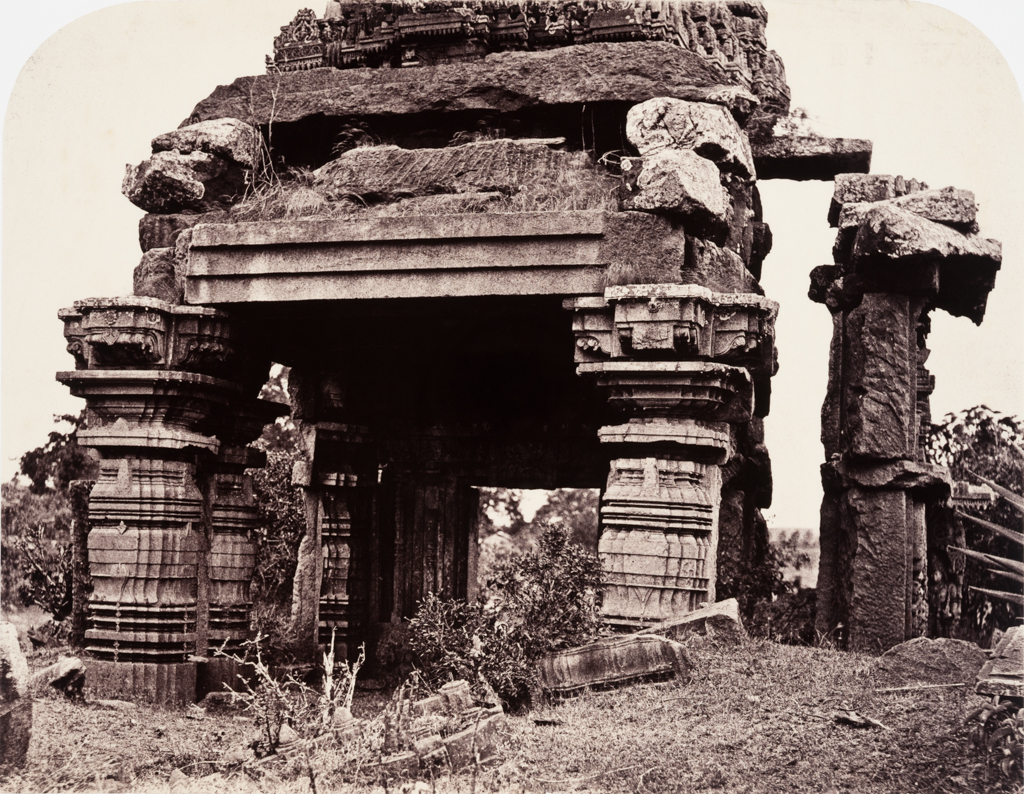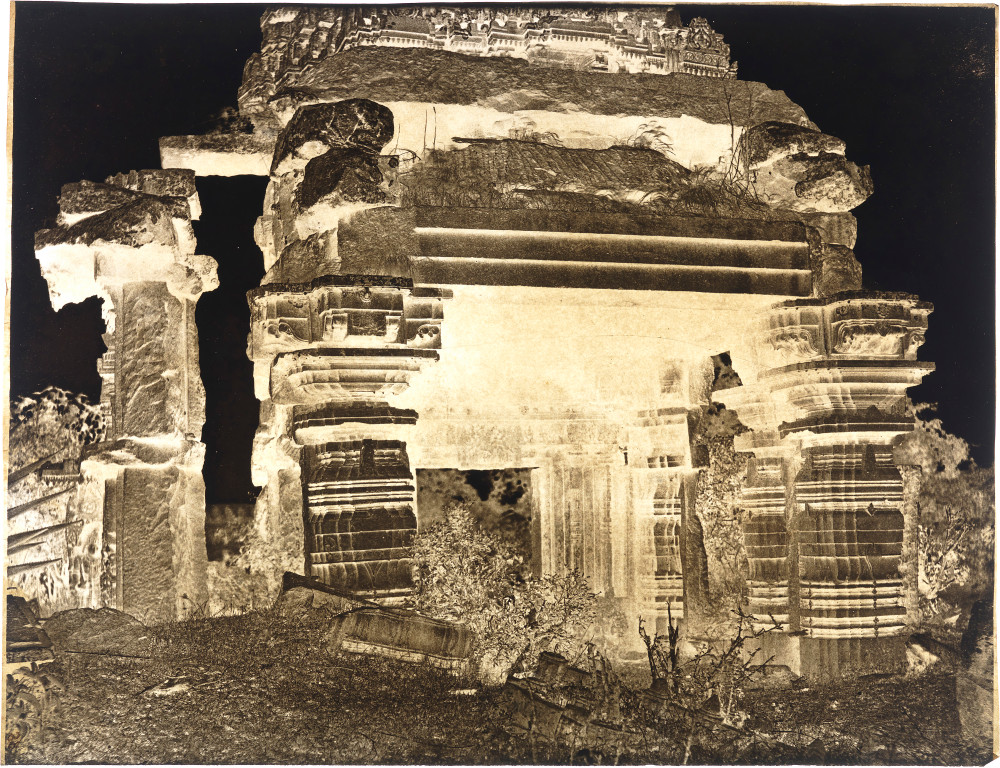Tripe Return to India

Hullabede: Suli Munduppum from the Northeast, December 1854
Canadian Centre for Architecture, Montreal
Tripe’s photograph of this decaying munduppum (a four-columned hall) revealed the precarious future of this structure in a way that no written account or drawing could have done.

Hullabede: Suli Munduppum from the Northeast, December 1854, waxed-paper negative
The Royal Photographic Society Collection at the National Media Museum, Bradford
Tripe most likely made paper negatives because the process was more forgiving in India’s climate. He could also prepare his negatives in advance and develop them at his leisure, unlike the newly invented collodion process in which the glass negative had to be prepared immediately before exposure and developed immediately afterward. Tripe also used very thin paper, which he waxed in order to make his negatives more transparent and capture greater detail. He made his prints by placing the negative in contact with a sheet of light-sensitive paper. At the time, there was no practical way to make enlargements, thus if he wanted a large print, his negative had to be of equal size.